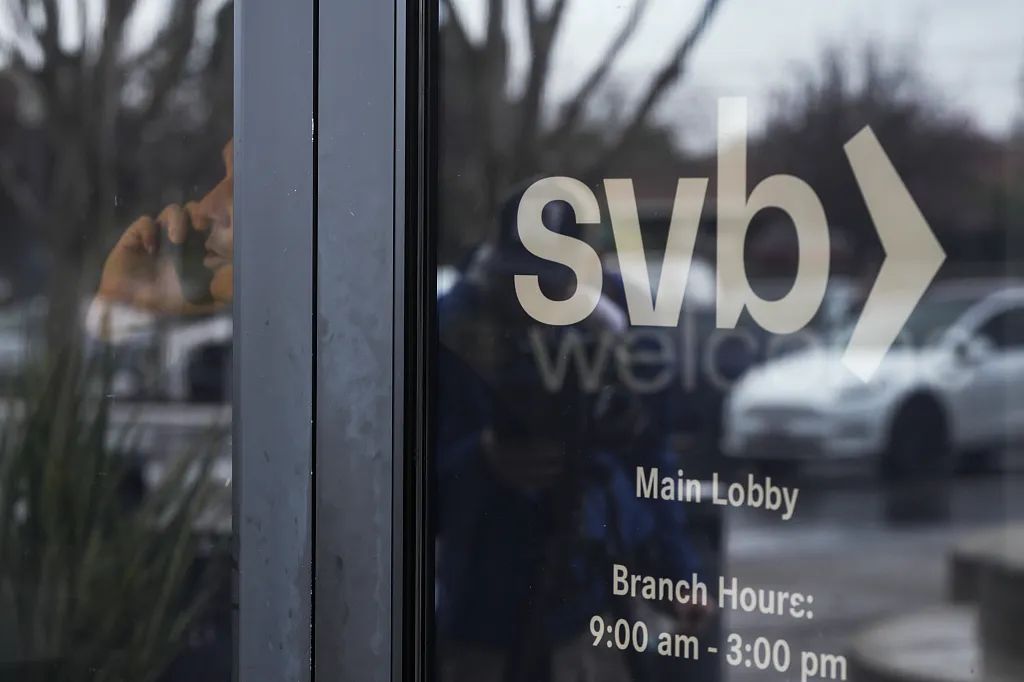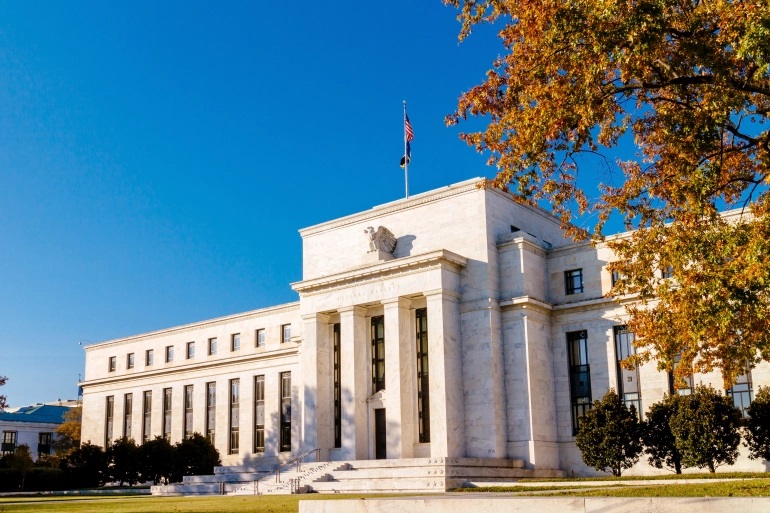The collapse of Silicon Valley Bank has caused a ripple effect.
As investors significantly reduced their bets on a rate hike by the Federal Reserve next week and sought to buy safer bonds for risk aversion, on March 13th local time, the two-year U.S. Treasury yield briefly fell below 4% for the first time since last October, plummeting by 60 basis points, marking the largest single-day drop since the stock market crash on “Black Monday” in October 1987. The 10-year U.S. Treasury yield fell by 10.2 basis points to 3.587%, and the yields on government bonds in European countries also fell sharply. On March 14th, the yields on government bonds in various countries rebounded.
Behind the sharp drop in bond yields, the global central bank rate hike expectations are rapidly cooling down. The market expects the Federal Reserve to raise interest rates by 25 basis points or even pause rate hikes next week, while less than a week ago, the market still expected a high probability of a 50 basis point rate hike by the Federal Reserve. In addition, the European Central Bank's almost certain 50 basis point rate hike this week has also become uncertain, and the market also expects the Bank of England to raise interest rates by only 25 basis points in the next move.
Wang Lei, Fund Manager and Managing Director of Shangbo Investment Management Co., Ltd., said that although the U.S. government and the central bank have taken measures to strengthen market confidence in the banking system, it is still uncertain whether the market will stabilize quickly. The Federal Reserve has realized that the tightening cycle has begun to have a negative impact on the economy, and the market is re-assessing the rate hike expectations of the Federal Reserve and other central banks.
Facing the storm triggered by the collapse of Silicon Valley Bank, the pace of tightening by central banks such as the Federal Reserve has to slow down. Wang Youxin, a senior researcher at the Bank of China Research Institute, analyzed that the Silicon Valley Bank storm has made European and American central banks face more constraints when formulating monetary policy. Previously, European and American central banks mainly focused on inflation trends when formulating monetary policy. At the beginning of the year, inflationary pressures re-emerged, causing tightening expectations to heat up again. However, the current liquidity risk pressures in the financial system make central banks more cautious about continuing to raise interest rates in the short term.

Facing the largest bank failure storm since the financial crisis, the Federal Reserve has had to shift its short-term focus to financial stability. On one hand, it needs to continue raising interest rates to curb inflation, and on the other hand, it also needs to protect the financial system.
Currently, the Federal Reserve has taken some measures to alleviate bank pressure and introduced an emergency financing tool called the Bank Term Funding Program (BTFP), which will provide loans up to one year to banks that pledge U.S. Treasury securities, agency debt, mortgage-backed securities (MBS), and other eligible assets as collateral. The Federal Reserve stated that the scale of the BTFP is large enough to cover all uninsured (above $250,000) deposits.
In this regard, Citigroup believes that the BTFP will essentially increase more reserves in the financial system, helping to alleviate financing pressure. In essence, this can be seen as a form of quantitative easing (QE) policy, although the Federal Reserve is still in a tightening cycle.
Although the BTFP may support market sentiment in the short term and alleviate the outflow of uninsured deposits, it cannot guarantee that bank deposits will not be transferred to the Federal Reserve's overnight reverse repurchase agreement (RRP) or other large banks, so there are still risks.
In Wang Lei's view, the series of rescue policies announced by the U.S. Treasury, the Federal Reserve, and the Federal Deposit Insurance Corporation (FDIC) are welcome, but it is not yet clear whether this is enough to prevent “herd behavior”: companies flocking to transfer deposits to larger institutions, thereby exposing regional banks' balance sheets to more risks.
The announced rescue policies may not be sufficient to calm the storm of bank failures, and the Federal Reserve is likely to slow down the pace of tightening at its March meeting to boost confidence. Under the sudden financial pressure of U.S. regional banks, the Federal Reserve is likely to raise interest rates by a smaller margin or even pause tightening actions, leaving more time to assess whether there will be further problems in the banking system.

Facing immense pressure in the banking industry, the outlook for the Federal Reserve's tightening policy has become uncertain again. Less than a week ago, Federal Reserve Chairman Jerome Powell opened the door to resuming a faster pace of interest rate hikes during his testimony in Congress. The probability of a 50 basis point rate hike at the Federal Reserve's March meeting once soared to 80%, but this door has now quickly closed.
The weakening of the Federal Reserve's hawkish policy is essentially a foregone conclusion. The key issue now is whether the Federal Reserve will raise interest rates by 25 basis points in March or pause the rate hikes altogether.
Many institutions, including BlackRock and JPMorgan Chase, believe that despite the severe impact of the Silicon Valley Bank incident, the Federal Reserve will continue to raise interest rates and will not stop at next week's meeting.
BlackRock stated that although the pressure in the banking industry is undermining investor confidence and tightening financial conditions, the Federal Reserve will need to continue raising interest rates to combat rampant inflation. “We believe this event will not cause the Federal Reserve to stop raising interest rates, which is very different from the environment in 2008 when all monetary policy levers were used to support the economy.”
However, some major Wall Street banks have offered different views, expecting the Federal Reserve to temporarily pause interest rate hikes this month. Jan Hatzius, Chief Economist at Goldman Sachs, said that in light of the pressures facing the banking system, he no longer expects the Federal Reserve to announce an interest rate hike at the March 22nd meeting. However, Goldman Sachs still expects the Federal Reserve to raise interest rates by 25 basis points each in May, June, and July, with the expected peak of the Federal Reserve's interest rate at 5.25% to 5.5%.
If the Federal Reserve continues to raise interest rates, the cost of bank liabilities will continue to rise, and the inverted yield curve will lead to more book losses for financial institutions, further increasing the pressure on the banking system. The risks in the current US financial system are still evolving, and the risks have not been fully exposed. For the sake of financial stability, Wang Youxin expects that the Federal Reserve may pause interest rate hikes in March to give the market more time to breathe.
In Wang Youxin's view, under the impact of the Silicon Valley Bank storm, the downward pressure on the US economy has become more pronounced. The rise in risk aversion and the deterioration of economic expectations, coupled with the Federal Reserve's slower pace of interest rate hikes, have led to a rapid decline in US Treasury yields and a downward trend in the US dollar index. The subsequent risk evolution is still unclear, but it is certain that the downward trend of the US economy is inevitable, and the US dollar index may continue to fluctuate and adjust.
Some extreme views even believe that the Federal Reserve may cut interest rates this month. Nomura analyst Aichi Amemiya said that in order to address the imminent financial risks, it is expected that the Federal Reserve will cut interest rates by 25 basis points and end QT at the March meeting, which was previously expected to be a 50 basis point rate hike.
Central banks act amid the storm of bank failures
Despite the Federal Reserve's aggressive interest rate hikes, which have not been seen in decades, policymakers generally felt that the Fed's policies have not caused significant damage to the economy. Spending and job growth seemed to be largely unaffected by the rise in interest rates, and the threat to financial stability was minimal.
However, recent financial turmoil has caused central banks' hawkish policies to waver. Bob Schwartz, an economist at the Oxford Economics Institute, believes that although the Silicon Valley Bank storm poses a small threat of systemic damage to the banking system, it has triggered financial instability risks, which are likely to encourage the Federal Reserve to be more cautious at the upcoming meeting.
In addition, the downward trend in US inflation expectations is also easing the pressure on the Federal Reserve to tighten monetary policy. On March 13, Eastern Time, the Federal Reserve Bank of New York released a survey of consumer expectations, which showed that respondents expected the inflation rate one year later to remain at 4.2%, a significant decrease from the 5% expected in January, the lowest level since May 2021. At the same time, US consumers' expectations for the inflation rate three years later remained stable at 2.7%, the same level as in October 2020; the expected inflation rate for five years later reached 2.6%, slightly higher than the 2.5% in January.
Although the Federal Reserve will not be as hawkish at this month's meeting, the probability of a complete shift in this round of monetary policy is not high. Zhao Wei, Chief Economist of Guojin Securities, analyzed that the probability of a systemic risk outbreak in the US banking industry is low, and the scale of small and medium-sized banks that may pose risks is small, with high deposit insurance coverage and limited contagion. The possibility of the Silicon Valley Bank bankruptcy forcing the Federal Reserve to “shift policy” is not high.
Wang Youxin also emphasized that considering curbing inflation is still the main policy goal of the Federal Reserve, it is still too early to talk about a complete shift in monetary policy. The Federal Reserve is likely to continue raising interest rates in May, and whether it will continue to raise interest rates in June and the second half of the year may depend on changes in economic and inflation indicators. If the US economy falls into negative growth in the second quarter and inflation accelerates, the Federal Reserve may stop the interest rate hike cycle. If inflation falls slower than expected, the Federal Reserve may continue to raise interest rates.
Throughout 2022, the Federal Reserve only needs to focus on the inflation target, but in 2023, the Federal Reserve will need to achieve a balance between maximum employment, stable prices, and financial risks, facing greater challenges. Zhao Wei predicts that the Silicon Valley Bank bankruptcy incident may further increase the volatility of market pricing for the federal funds rate.

VERTU Reminder: The content and viewpoints are for reference only and do not constitute any investment advice.







